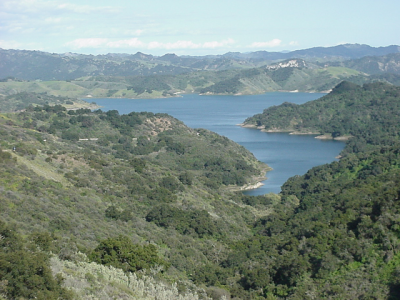Drought and the Supreme Court
Does the Court’s Decision in the Raisin Case Imperil Water Management?

When I first read Rick’s writeup of the Supreme Court’s decision in USDA v. Horne, concerning the federal government’s Depression-era system of “marketing orders” that required farmers to set aside a percentage of their raisin crop in a government-controlled account, I was worried about water. And that’s not just because I always worry about water.
Horne turned on whether the federal program is better considered as a physical taking or a regulatory one. That has huge implications for water law, because of recent controversies about whether the government’s failure to deliver contracted water amounts to a physical taking or a regulatory one. That is critically important because whereas regulatory takings generally implicates a balancing test, physical takings doctrine uses a per se test that purposefully ignores any public policy considerations. In times of drought, one can shudder about lawsuits mandating water usage completely apart from public policy considerations.

Seven years ago, in Casitas Municipal Water Dist. v. United States, the Federal Circuit strongly held — over a vigorous dissent — that if the government does not deliver contracted water because of Endangered Species Act requirements (i.e. keeping water instream to protect fish), then that could be a physical taking. But as far as I know, no other circuit has adopted that holding, and neither has the Supreme Court. And it was a rather odd holding because under California state water law, individuals and private actors cannot own water: they can only hold the right to use it. If you cannot own something, you still may have valuable rights, but it is harder to call it a physical taking.
So the question is whether Chief Justice Roberts’ opinion in Horne would include dicta supporting the Casitas decision. The answer appears to be no. The opinion distinguishes an earlier case, Leonard & Leonard v. Earle, 279 U. S. 392 (1929), which
upheld a Maryland requirement that oyster packers remit ten percent of the marketable detached oyster shells or their monetary equivalent to the State for the privilege of harvesting the oysters….The oysters, unlike raisins, were “feræ naturæ” that belonged to the State under state law, and “[n]o individual ha[d] any property rights in them other than such as the state may permit him to acquire.” Leonard v. Earle, 155 Md. 252, 258, 141 A. 714, 716 (1928). The oyster packers did not simply seek to sell their property; they sought to appropriate the State’s. Indeed, the Maryland Court of Appeals saw the issue as a question of “a reasonable and fair compensation” from the packers to “the state, as owner of the oysters.” Id., at 259, 141 A., at 717 (internal quotation marks omitted). Raisins are not like oysters: they are private property— the fruit of the growers’ labor—not “public things subject to the absolute control of the state,” id., at 258, 141 A., at 716. Any physical taking of them for public use must be accompanied by just compensation.
It’s pretty easy to make an analogy between oysters and water because both are owned by the state. Indeed, if anything, the opinion might undermine the Casitas decision for precisely this reason. If so, it’s good news.
Drought brings suffering. The question is how that suffering should be distributed. There are lots of ways to do this, some better, and some worse. But throwing it into the Fifth Amendment almost guarantees a bad result because of the lack of flexibility, without any assurance that it will protect less powerful interests — the touchstone of any constitutional right. Politicians might decide things badly here — they certainly have done that for decades if not centuries. But judges might be worse.
Reader Comments
2 Replies to “Drought and the Supreme Court”
Comments are closed.






If the California courts or the SWRCB designate a use or method of water use as wasteful or unreasonable, then a taking does not occur. That is covered by the California Constitution (Article 10, Section 2), and case law from way back through Joslin, Forni, Audubon, U.S. v SWRCB (1986), and Light v SWRCB (2014). All these cases have defended that judgment. The deeper question in my mind is whether the U.S. Supreme Court could get away with holding that Article 10 Section 2 of the California Constitution is inconsistent with the U.S. Constitution and thus hold that this particular CA Constitution section is unconstitutional with regard to the U.S. Constitution. If that can, and eventually does, happen then Zasloff’s deepest fears are warranted.
I’ve thought for a long time that interpreting regulatory takings, especially investment-backed expectations, via the labor theory of property could help provide better certainty and a more just application of the law. Have considered doing something with the idea but haven’t.
These cases suggest another application of the labor theory of property, in that humans may have harvested oysters but human labor didn’t create them, as opposed to raisins that are in large part the result of labor.